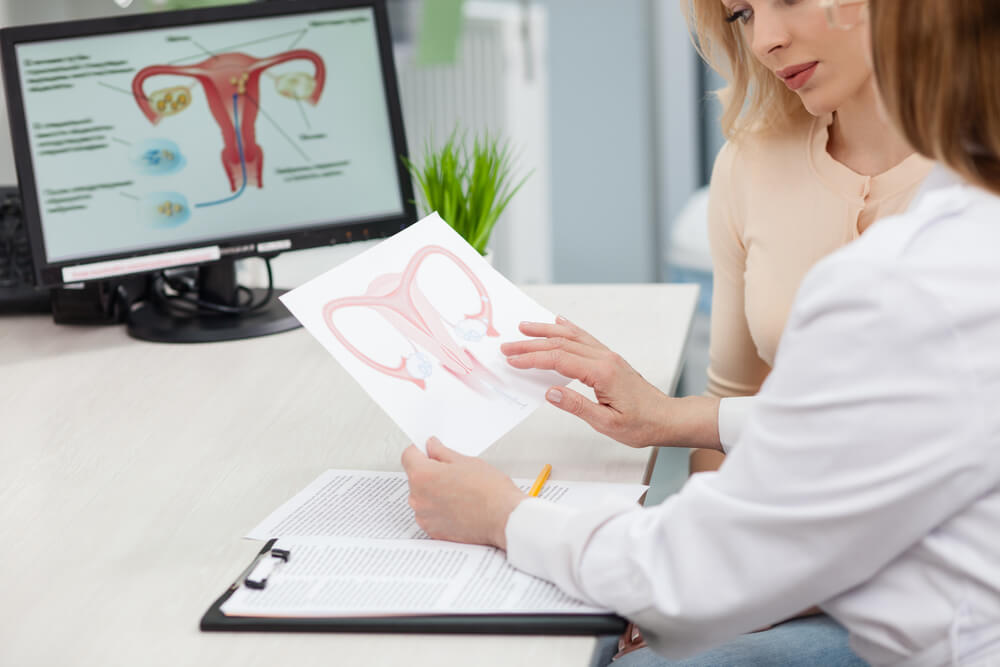Bartholin’s glands are parts of the vagina in charge of secreting fluids that perform the role of a lubricant during sexual intercourse. They are located between the vagina and the vulva, on either side of the vaginal lips, and they are around 0.4 inches in size.
Vaginal cysts that develop on the Bartholin’s glands are called Bartholin’s cysts and appear because of blockages at the openings of the glands. Usually, they are firm and tender, shaped like lumps on the vagina, and they are, in fact, just mucus buildup that turns into a lump. If the cysts get infected by bacteria, they can become red and swollen and grow as big as a golf ball.
Although the cysts do not cause pain in most cases, they can cause irritation and unpleasant sensations during activities such as walking, sitting, or sexual intercourse. Some of them are small, and a person does not even notice them, but if they become infected, then they might be painful, and you might need a doctor’s advice.
Dr. Leonardo Blachar is an expert on this topic, amongst others, and if you are looking for efficient advice on how to handle this condition, this is the address to turn to. For other details which might be helpful, continue reading this article because, in the following sections, we will deliberate more on the causes, symptoms, and Bartholin’s cyst treatments.
Causes of the Bartholin’s Gland Cysts
Vaginal cysts of this type can occur in all women, and research shows that around two percent of females will get them at a certain period of their reproductive age. The chances of getting this type of lump on the vagina decrease as they get to their menopausal years.
Other factors which might influence this, apart from age, are:
- Frequent sexual activity
- Having the Bartholin’s gland cyst before
- Surgery of the vagina or vulva
- Previous physical harm in the same area
When it comes to causes, doctors generally do not have the answer to why some women are prone to it, and some are not. Several reasons might affect the creation of the cysts, and it is essential to get acquainted with them:
- Injury
- Irritation
- Additional skin growth in the vulvar area
- Bacteria that cause gonorrhea and chlamydia
- Bacteria that cause other sexually transmitted infections
- Bacteria that cause pneumonia, ear infections, and respiratory issues
- E.coli bacteria, which causes hemorrhagic colitis
Symptoms of the Bartholin’s Gland Cysts

As stated before, having Bartholin’s cysts does not necessarily mean you will be in pain. Some women are unaware of their cysts until a doctor examines their general reproductive health and spots their presence. They are sometimes very tiny and do not cause any problems whatsoever.
The symptoms develop when a vaginal cyst becomes infected (an abscess appears). Usually, this type of cyst develops only in one of the two glands, and even though we might not notice it at first, it can affect the vaginal lips so that the infected one becomes much larger than the other.
Some of the symptoms are:
- Swelling
- Tenderness
- Fever
- Discomfort during sexual intercourse, sitting, walking
- Discomfort while inserting a tampon
- Pain while touching the area
- Redness
- Increase of the cyst in size (larger cysts equal greater discomfort)
- Leakage from the cyst
So, what happens when bacteria enter the cyst fluid? When this occurs, the bacteria cause a buildup of discharge, creating an abscess. The abscess is very painful, and it most probably needs medical attention. It develops very fast, and these are some of the signs that you might want to be on the lookout for to catch it in the early stages:
- Tenderness
- Redness
- Pain during sexual intercourse
- Fever
- Heat sensation in the area
- Ruptures
- Leakage
Diagnosis and Treatment
When it comes to diagnosis of the condition, your chosen doctor will perform a physical pelvic examination. The size of the cyst and any symptoms of infection will be looked at, and if there is any leakage from the cyst, this fluid will be taken to be tested for STIs and other bacterial infections. You might also need to do a urine and a blood test.
For women who turned 40 years of age or more, the examination could also include a biopsy of the cystic tissue to rule out the chances of vulvar cancer and other more severe conditions. If the biopsy shows that there is a reason for worry, then the cysts get surgically removed. Although the chances of getting cancer in Bartholin’s glands are very slim, it is essential to rule out all the potential threats, especially if the person is over the age of 60.
Bartholin’s cysts treatments include different approaches depending on how big the cyst is, whether the person feels discomfort or not and whether it is infected.
Usually, when the cysts are small, and you do not even notice them, no treatment is necessary. This said, it is of high importance to follow the state of the cysts and their development to be able to avoid additional complications and treat them on time.
Some of the treatments for smaller size Bartholin’s cysts are:
- A warm bath: sitting in a warm tub for 10-15 minutes several times a day might relieve the pain
- Pain medication: can help with pain relief (ibuprofen and alike)
- Warm towel: soaking the towel or cotton ball in warm water and applying tender pressure on the area
When it comes to larger cysts, which in addition might also be infected, these are the recommended treatments:
- Antibiotics: might be prescribed by doctors if your cyst is infected or you have an STI
- Surgery: draining the fluid from the cyst when it is infected is a standard procedure done with a catheter which is placed for a few weeks to be able to completely drain the cyst
- Laser: doctors use a carbon dioxide laser to drain a cyst by creating an opening that helps with the drainage
- Marsupialization: surgery where the cyst is opened and drained. Afterward, the surgeons use the edges of the cyst to create a “pocket” for all future drainages
- Needle usage: the doctors might use a needle to drain the cyst while putting alcohol solution afterward to reduce the chances of new potential bacteria entering the wound
- Complete removal: if none of the abovementioned therapies are working, then in extreme cases, doctors surgically remove the Bartholin’s glands
More On Managing The Condition

Here are some last tips on handling Bartholin’s cysts:
- Generally, you should not be immensely worried about these cysts during your reproductive age – just go to regular gynecological check-ups and follow all the advice given to you by your chosen medical professional
- In some cases, the cysts go away on their own without any need for treatments or remedies.
- There are not many ways to prevent Bartholin’s cysts because doctors do not know what exactly is causing them, but keeping safe during sexual intercourse is advised in order to decrease the chances of STIs, which do affect the development of the cysts.
- If the cyst bursts or drains on its own, that is not a problem; just clean the area to prevent any further spread of infection.
- Do not pop or drain the cysts on your own because this can cause an infection.
Call Us!
Any condition involving your reproductive health is stressful and unpleasant. Our expert staff is here to help you with any questions and direct you in the right way. Call us!


